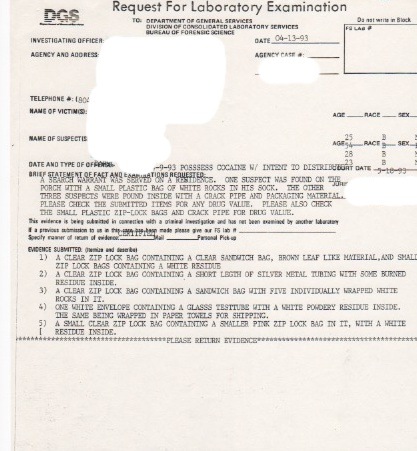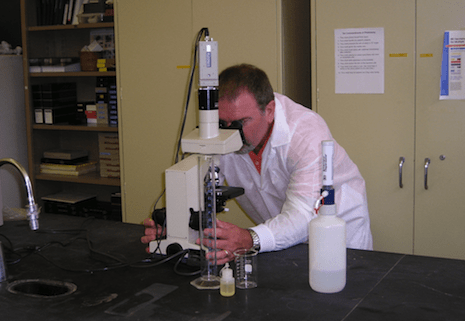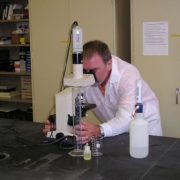Heading to the Laboratory: Toxicology, DUID, and Kay Scarpetta
As a police detective in the Commonwealth of Virginia, I investigated a vast assortment of criminal cases ranging from forged checks to robbery to B&E, major narcotics cases, murder for hire, occult crimes, and murder, to name a few. Solving those cases, including murders, often involved laboratory scientists who conducted a range of tests on various types of evidence.
Determining the Cause of Death
In Virginia it is the Office of the Chief Medical Examiner Office (OCME) that’s responsible for determining the cause and manner of deaths that that fall under a handful of circumstances. Those specific conditions are:
Pursuant to § 32.1-283 of the Code of Virginia, all of the following deaths are investigated by the OCME:
- any death from trauma, injury, violence, or poisoning attributable to accident, suicide or homicide;
- sudden deaths to persons in apparent good health or deaths unattended by a physician;
- deaths of persons in jail, prison, or another correctional institution, or in police custody (this includes deaths from legal intervention);
- deaths of persons receiving services in a state hospital or training center operated by the Department of Behavioral Health and Developmental Services;
- the sudden death of any infant; and
- any other suspicious, unusual, or unnatural death.
Autopsies in the state are conducted at one of four district offices: Manassas, Norfolk, Richmond or Roanoke. The chief medical examiner’s office is located in Richmond. At the time when I worked as a detective the Central Laboratory, where the majority of forensic testing of evidence was conducted, was located in a downtown in a building shared with the medical examiner’s office. Ironically, much like a TV show setting, the morgue was in the basement.
Dinner with the Inspiration for Kay Scarpetta
I know this may sound a bit morbid, but I often made my way to the morgue simply to hang out and to learn. After all, this was the morgue that gave birth to Kay Scarpetta, the famous fictional medical examiner created by Patricia Cornwell. The character was based on real-life Chief Medical Examiner Dr. Marcella Fierro, a brilliant, renowned medical examiner. Dr. Fierro was the M.E. who conducted the first autopsy I attended, an event I detailed in my book police procedure.
When Denene received her PhD (in pathology) from the University of Virginia, we celebrated at the Commonwealth Club in downtown Richmond. Dr.Fierro and one of her assistants, Dr. Kay, joined us for dinner. Tell you what, nothing beats a good autopsy conversation during dinner.
Another point to ponder – Cornwell’s first book, Postmortem, was based on the case(s) involving the brutal murders committed by serial killer/rapist Timothy Wilson Spencer. Spencer was the first person in the country convicted of a capital crime through DNA testing.
Spencer’s victims were discovered nude or partly nude in their bedrooms with their hands firmly tied, with rope, belts, or socks secured tightly around their necks. Spencer entered their homes through windows and then raped, sodomized, and then choked them until they were dead.
In April of 1997, the man known as the Southside Strangler was electrocuted and pronounced dead at 11:13 p.m. I sat just a few feet away and watched him die a gruesome death. To read the entire story of that night, click here.
Okay, enough rambling and reminiscing, so back to the lab – The upstairs floors of the laboratory high-rise complex housed various labs where scientists and laboratory personnel examined and tested every from gunshot residue and fingerprints to blood stains and poisons.
When I and other officers delivered evidence to the lab we were required to check in with an official stationed at the front desk. It was there where we submitted the items and the accompanying forms (see below).

Request for Laboratory Examination forms must accompany all submitted items. I’ve hidden the suspects’ identifying information in the form above, this one from my own case files. The items tested positive cocaine and the individuals involved accepted plea deals.
After the evidence was logged into the system and assigned a number(s) it was officially/physically received by the lab’s police officer on duty. They then delivered the materials/items to their proper place(s) where it would then be picked up by the expert who’d conduct the testing.
While a the facility I often visited various labs to see how far along other evidence was in their respective processes—fingerprints, trace evidence, DNA, etc. One of the places I visited was the toxicology lab. I did so for three reasons. One – I found the place to be fascinating. Two – I knew the person in charge and we’d been friends for quite a while. Three – They offered free coffee and sometimes a doughnut or two.
Back to my fascination with the tox lab. I find poison cases to be intriguing since they’re often so personal. They typically require a bit of planning and a ton of patience. And, to solve those kinds of murders, it take a good toxicologist to help put the pieces together in a form that’ll point to the killer.
In Virginia’s tox labs, they (per their website) “analyze body fluids and tissues for the presence and concentrations of alcohol, drugs, and other potential poisons. Support is provided to Medical Examiners to assist in determining cause and manner of death, and to law enforcement agencies investigating crimes where drug or alcohol use may be implicated.
The toxicology lab is often key to DUI and DUID (driving under the influence of drugs) cases Here’s how (again, from their website):
“Driving Under the Influence (DUI/DUID)
The Toxicology Section receives all blood samples taken by law enforcement agencies during DUI/DUID investigations to determine alcohol and drug content. After alcohol, the most frequently detected drugs are marijuana, prescription pain relievers (e.g., OxyContin, Percocet, Vicodin), benzodiazepines (e.g., Xanax, Valium, Klonopin), cocaine and zolpidem (Ambien, Intermezzo). While statutory limits exist for alcohol, PCP, cocaine, methamphetamine and MDMA (ecstasy) in blood, none are set for other drugs. Consequently, expert toxicology testimony regarding the effects of a drug or a combination of drugs on human performance and driving behavior is often necessary to establish impairment.”
And …
“The Department supplies Blood Collection Kits for use in DUI/DUID cases in Virginia. With these kits, the DUI/D Submission Information Sheet may be used instead of a Request for Laboratory Examination Form.
- Non-Implied Consent Cases
Law enforcement agencies also submit blood, urine or other body fluids from suspects or victims of other crimes. Examples of these situations include drug-facilitated sexual assault, DUI/D investigations not pursuant to the implied consent statute, and child abuse or endangerment.
- Alcoholic Beverage Testing
The Central Toxicology Section in Richmond also tests suspected alcoholic beverages submitted by law enforcement agencies. Most of these cases involve the investigation of minors in possession of alcohol, open intoxicants in vehicles and illegal sale/distribution of alcohol. These types of cases require the analysis of alcohol content. Any beverage containing greater than or equal to 0.5% ethanol is defined as an alcoholic beverage (Code of Virginia § 4.1-100).”
TODAY’S MYSTERY SHOPPER’S CORNER
Since the holiday season is nearly here, I’ve decided to feature a few fun items for your mystery shopping needs and wants. I’ll post these regularly throughout the remaining weeks of 2018.
So, for day five of MSC, especially for those of you who’re shopping for writer friends who enjoy a bit of research and/or relaxation, here are my picks. By the way, someone asked why I post all Amazon links for the books I recommend. The answer is that they work well for and with this site, but by all means feel free to purchase books anywhere you like. But why not here by simply clicking the links I provide?
First up, Postmortem, Patricia Corwnell’s book based on serial killer Timothy Spencer.
Next is my book about police procedure. Inside, in addition to valuable information about cops and what they do, you’ll find a detailed chapter on autopsy as well as the complete story on the night I watched Spencer die in the electric chair.
Tactical pen/Self-Defense Weapon and Flashlight.
Multi-Tool Pliers and Handtools
Case Police Mini Trapper Pocket Knife









